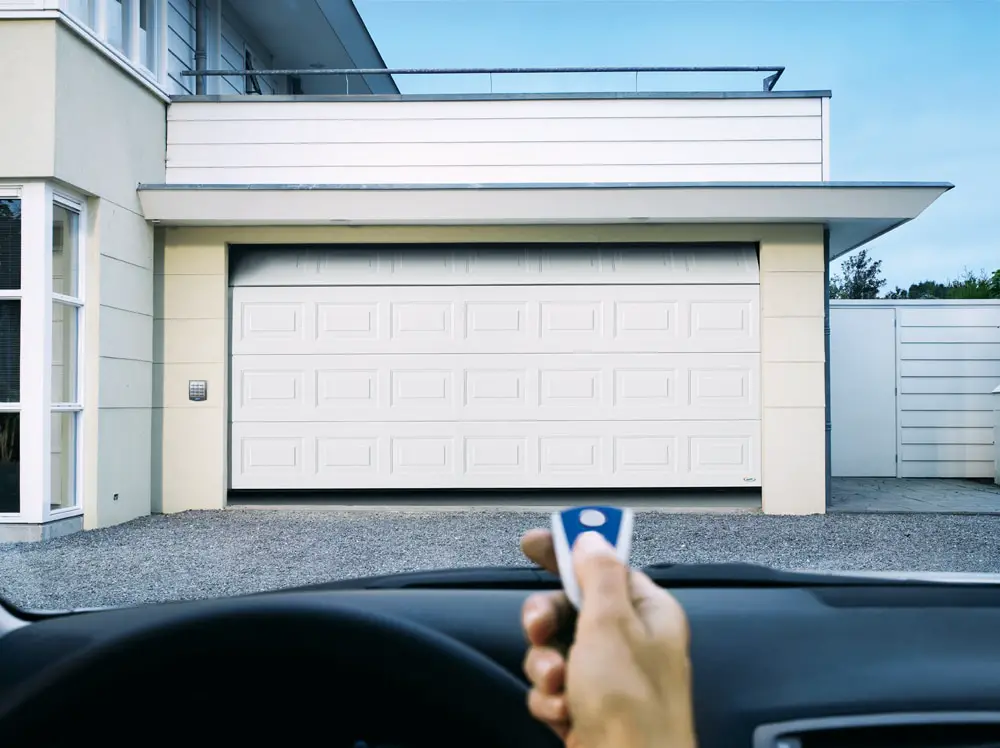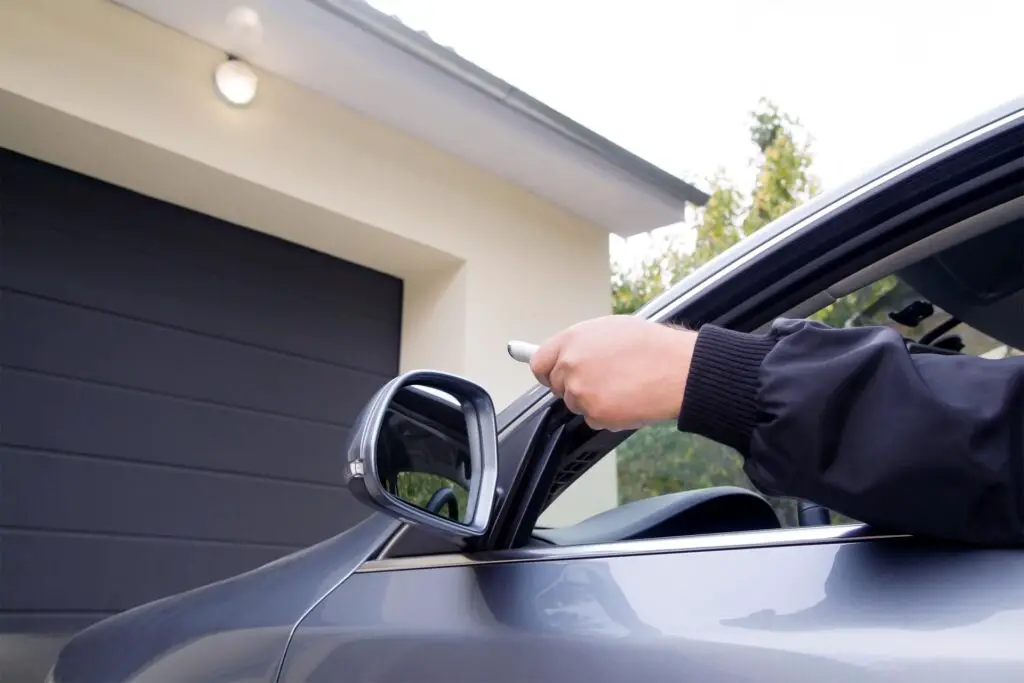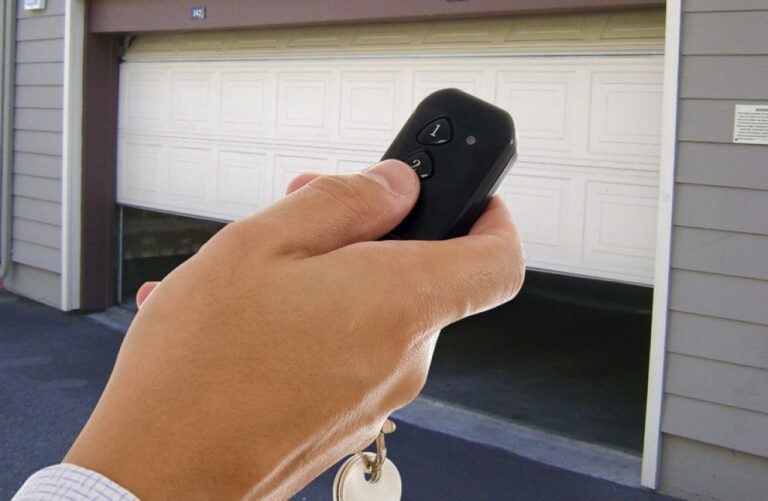Introduction
Securing your automatic garage door is crucial for the overall safety and security of your home. With the advancement of technology, automatic garage doors have become increasingly popular due to their convenience and ease of use. However, it is essential to take appropriate measures to ensure that your garage door is secure from potential intruders and unauthorized access.
One of the fundamental steps to secure your automatic garage door is to invest in a reliable and robust garage door opener. Modern garage door openers come equipped with advanced security camera features such as rolling code technology, which generates a unique code every time the door is operated. This prevents unauthorized individuals from intercepting and duplicating the code.
Ensuring that the door is in good working condition, with no loose or damaged parts, is crucial for its security.Tips on lubricating the moving parts, checking the sensors, and tightening any loose hardware. From smartphone-controlled access to video monitoring, these innovative solutions can provide an extra layer of protection to your garage.

How do I proof my garage door from breaking in?
To further secure this door, we recommend reinforcing the door’s strike plate and hanging a solid core door with a deadbolt. Your garage entry door is also the perfect spot for either a standalone door sensor or one connected to a top home security system.
Securing your garage door from potential break-ins is essential to protect your property and ensure the safety of your home. Here are several effective measures you can take to proof your garage door and deter burglars:
Upgrade the locks: Reinforce the security of your garage door by installing high-quality locks. Consider using deadbolt locks, which are more resistant to forced entry. Additionally, reinforce the strike plate and hinges with heavy-duty screws to make them harder to break.
Install a security system: Invest in a comprehensive home security system that includes sensors and cameras specifically designed for the garage area. These systems can detect unauthorized entry attempts and provide video surveillance, serving as a deterrent to potential burglars.
Use a security bar or clamp: A security bar or clamp installed on the inside of the garage door can add an extra layer of protection. This device prevents the door from being forced open even if the lock is compromised.
Reinforce windows and entry points: If your garage has windows or side doors, reinforce them with impact-resistant glass or security film. Ensure that these entry points have strong locks and consider installing window bars or sensors for added security.
Secure the emergency release mechanism: The emergency release cord on your garage door can be a weak point for burglars. Prevent its manipulation by securing it with a zip tie or by using a product designed to lock it in place, while still allowing for emergency release from the inside.
Are automatic garage doors secure?
Automatic garage door openers are a great convenience, but they can also serve as a weak link in your garage security. Garage door openers are equipped with an emergency release lever, which usually has a cord hanging down.
Automatic garage doors may be secure with safeguards. Note that not all automated garage doors have the same security features. Consider these variables while analyzing automated garage door security:
Quality of the garage door opener: The garage door opener is a crucial component of the automatic garage door system. Invest in a high-quality opener that incorporates advanced security features such as rolling code technology. This technology generates a unique code each time the door is operated, making it difficult for potential intruders to intercept or duplicate the code.
Door material and construction: The material and construction of the garage door itself play a significant role in its security. Opt for a solid and sturdy door made of materials like steel or reinforced fiberglass that are resistant to forced entry.
Locking mechanisms: Automatic garage door locks should be strong. Multiple locking points, such as deadbolts or sliding bolts, increase door security when closed.
Sensor technology: Most modern automatic garage doors are equipped with safety sensors that detect objects or obstructions in the path of the closing door. These sensors help prevent accidents and also provide an additional layer of security, as they can detect unauthorized attempts to force open the door.
Can a garage door be opened by thieves?
A burglar can open a garage door from the outside in a matter of seconds with nothing more than a wire coat hanger. All they have to do is use a tool to pry open the top edge of the door, drive the hanger through the opening, grab the cord with the hook and pull.
Garage doors can be vulnerable to break-ins if proper security measures are not in place. While it is not impossible for thieves to open a garage door, their ability to do so depends on several factors:
Weak or out-of-date security: If your garage door doesn’t have the right security features or is built with old technology, thieves will find it easier to break into. It is possible to code grab or hard force older garage door openers that use set codes or don’t have moving code technology.
Lack of maintenance: A poorly maintained garage door may have loose or damaged parts, making it easier for burglars to exploit weaknesses and gain access. Worn-out springs or faulty locking mechanisms can also compromise the security of the door.
Forced entry methods: In some cases, determined thieves may resort to forced entry techniques such as prying, drilling, or bypassing the locking mechanism. Weaker materials or inadequate reinforcement can make it easier for intruders to exploit these vulnerabilities.
Remote control interception: If a thief manages to intercept the signal between the garage door opener and its remote control, they can gain unauthorized access. This is more likely with older systems that use fixed codes or lack encryption technology.
How do automatic garage doors work?
An automatic garage door opener allows you to open and close the door without any effort other than pushing a button, which means you can open the door from the comfort of your car. These openers work by using radio frequencies. When the frequencies match, the door opens or closes.
Automatic garage doors open and shut easily utilizing mechanical and electrical components. The usual operation of automated garage doors:
Motor and opener: The garage ceiling motor turns the automatic garage door on and off. The garage door opener controls how the door works. A movable remote or a panel that is placed on the wall can be used to control the door. Motor and opener are attached to a trolley on a metal track. The trolley is linked to a garage door carriage. When engaged, the motor pushes the trolley along the track, opening or closing the door.
Spring and counterbalance system: Automatic garage doors use springs to balance their weight. Torsion springs are usually above the door, whereas extension springs are on each side. These springs store and release stress, making door lifting and lowering simpler for the motor.
Safety sensors: Most current automated garage doors have these. Infrared sensors at the door bottom detect items or barriers in the closing path. To avoid mishaps, the sensors will stop the door from closing if an item is detected.
Control panel and remote access: A garage wall-mounted control panel operates automatic garage doors. The door may be opened, closed, or stopped using this panel. Handheld remote controllers let you open the door from within your car.
How long do automatic garage doors last?
How long your garage door will last largely depends on daily usage, but also depends on the construction, door quality, maintenance and local climate. With these considerations, most doors will last 15 to 30 years. Garage door openers should reliably perform for 10 to 15 years.
Automatic garage door lifetime depends on door quality, maintenance, and use. Automatic garage doors may last a long time with regular maintenance.
Material and construction: Garage door endurance depends on its material. Steel and reinforced fiberglass doors last longer than wood or cheaper doors.
Quality of components: The motor, springs, wires, and tracks affect the longevity of the automated garage door. Buying high-quality parts and maintaining and lubricating them may enhance their lifetime.
Maintenance and care: Automatic garage doors need regular maintenance to last. Lubricating moving parts, tightening loose hardware, and examining and replacing worn parts are examples. Following the manufacturer’s maintenance plan and fixing problems quickly may increase the door’s lifetime.
Usage patterns: Garage door longevity depends on frequency and operation. Opening and shutting the door often may cause wear and tear. Misuse or hard treatment may potentially shorten the door’s lifespan.

Can I convert my manual garage door to automatic?
In most cases, the answer is yes, manual garage doors can be automated. However, sometimes there are certain cases where automating an old door is impractical and it would be a better decision to install a completely new door with a motor.
Manual garage doors may be mechanized. Automation may make a manual garage door more convenient and secure. Conversion involves these steps:
Start with the manual garage door and its parts to determine feasibility. Check the door for damage or structural concerns. Make sure the door works with an automated opener.
Choose a garage door opener that suits your needs and manual door. Consider the door’s weight, size, driving mechanism (chain, belt, or screw), and features (remote control or smartphone integration).
Next, install the garage door opener. This usually requires mounting the opener on the ceiling or wall, connecting the drive mechanism to the door, and installing safety sensors and the control panel.
Powering automatic garage door openers requires electricity. Make that the opener has electricity or is connected to an outlet.
After installing the opener, modifications may be needed to guarantee smooth door functioning. Adjusting spring tension, aligning tracks, and programming the opener to follow door movement are examples.
What are some essential steps to secure an automatic garage door?
Securing an automatic garage door is crucial to ensure the safety and protection of your home. Here are some essential steps to enhance the security of your automatic garage door:
Buy a trustworthy garage door opener with rolling code technology. Each door operation creates a unique code, making it impossible for intruders to intercept or reproduce.
Perform regular upkeep Regularly examine and maintain your garage door to keep it running. Check for loose springs, wires, and hinges and fix them immediately. Lubricate moving components periodically for smooth functioning.
Lock garage windows and side doors. Add impact-resistant glass, security film, window bars, or sensors to windows for further protection.
Secure the emergency release Burglars might exploit your automated garage door’s emergency release cable. Use a zip tie or device that locks it in place while enabling emergency release from the inside to prevent manipulation.
Add your automatic garage door to your home security system to make it work with it. This lets you control and watch the door from afar, get tips for any strange behavior, and connect it to video security systems to make it safer.
Should I change the default access code on my automatic garage door opener?
Yes, changing the default access code on your automatic garage door opener is highly recommended to enhance the security of your garage and home. Here are a few reasons why changing the default access code is important:
Prevent unauthorized access: Garage door openers often come with a default access code set by the manufacturer. This default code is widely known and can be easily exploited by potential intruders. Changing the default code ensures that only authorized individuals have access to your garage.
Protect against code grabbing: Leaving the default access code intact makes your garage vulnerable to code grabbing. Code grabbers are devices that can intercept and record the signal sent by your garage door opener, allowing thieves to replicate the code and gain unauthorized access. By changing the code, you eliminate this risk.
Maintain security: Change the default access code if you moved into a new property or bought a new garage door opener. This prevents former owners or others with the default code from entering your garage.
Customize your security: You can customize your security by changing the entry code. Make sure you pick a unique code that is hard to figure out. Also, don’t use numbers that are repeated or that go in a certain order. This is an extra step to protect against brute-force strikes or guessing games.
Integration with smart home systems: Changing the default access code is often a necessary step when integrating your automatic garage door opener with smart home systems. Smart home security systems often require a unique code to ensure compatibility and enhance overall security.

Conclusion
Securing your automatic garage door is of paramount importance to ensure the safety and protection of your home and belongings. By following the steps and precautions outlined in this guide, you can significantly enhance the security of your garage door. Investing in a reliable and advanced garage door opener with features like rolling code technology is a crucial first step. This technology prevents unauthorized individuals from accessing your garage by generating unique codes every time the door is operated.
Regular maintenance and inspection of your garage door are equally essential. Your home security system will work with your robotic garage door if you connect it to it. This lets you handle and watch the door from away. If it does something strange, you can get alerts and connect it to video security systems to make it safer.
To prioritize the security of entry points to your garage, such as windows and side doors. Reinforcing these areas with sturdy locks and, if necessary, installing security bars or sensors, adds an extra level of defense against potential break-ins. Maintaining good security habits is crucial. Avoid leaving your garage door remote in your vehicle, as it can be easily stolen or accessed by criminals. Additionally, consider using timers or motion-activated lights to deter potential intruders.

